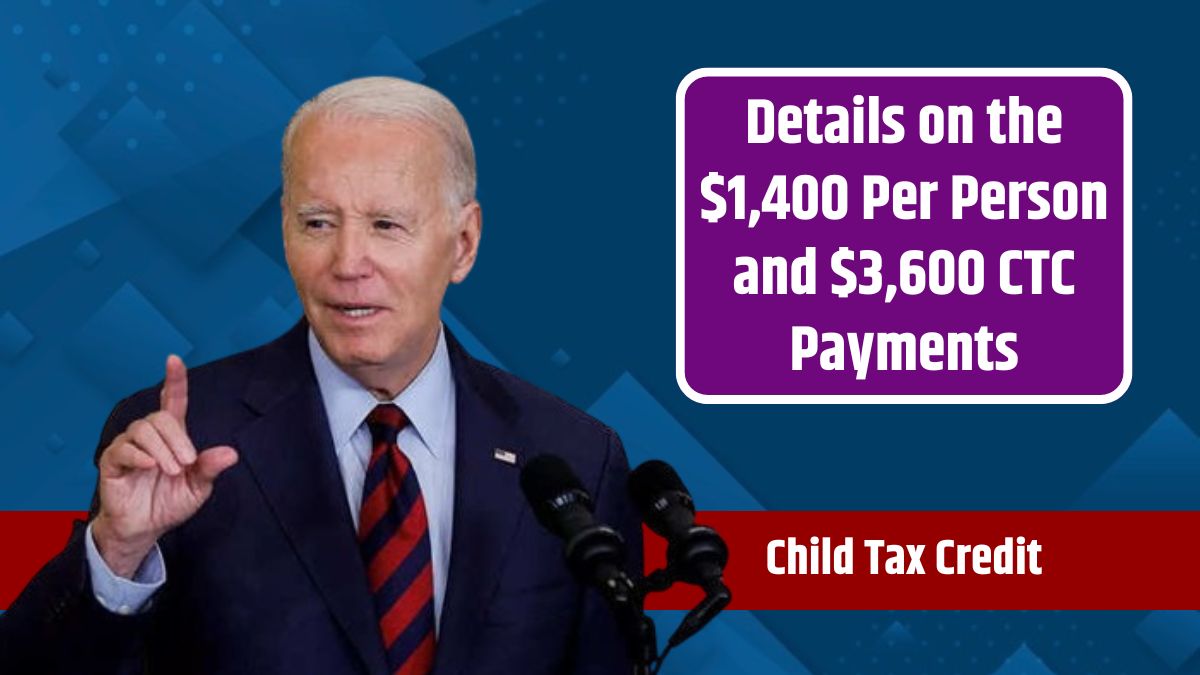The American Rescue Plan (ARP) continues to be a cornerstone of financial support for millions of Americans, offering vital relief through the $1,400 per person stimulus payments and the expanded Child Tax Credit (CTC). As 2024 approaches, it’s important to stay informed about the updates to these benefits, who qualifies, and how they can impact your financial situation.
Child Tax Credit (CTC)
The Child Tax Credit (CTC) is a crucial benefit designed to help families with dependent children in the United States. Established in 1997, the CTC aims to reduce the financial burden on households raising children, providing significant tax relief and direct payments.
Eligibility
To qualify for the CTC under the American Rescue Plan, households must meet several specific criteria:
- Child’s SSN: Each qualifying child must have a valid Social Security Number.
- Age Requirement: The child must be under 17 years old by the end of the tax year.
- Residency Requirement: The child must have lived with the claimant for more than half of the year.
- Citizenship Status: The child must be an American citizen, national, or resident alien.
- Financial Support: The child must not have provided more than half of their own support.
Ensuring that you meet these requirements is essential when planning to claim the CTC, as eligibility directly impacts the amount of financial support you may receive.
Enhanced Child Tax Credit
The American Rescue Plan significantly enhanced the Child Tax Credit, providing more substantial support compared to the original CTC. Here are the key differences:
- Increased Credit Amount: The ARP increased the CTC from $2,000 per child to $3,600 for children under age 6 and $3,000 for children aged 6-17.
- Refundability: The enhanced CTC was made fully refundable, allowing low-income families to receive the full credit even if they owed no taxes. Previously, only up to $1,400 per child was refundable.
- Expanded Eligibility: For the first time, the CTC included 17-year-olds, expanding the age range from the original CTC, which only covered children under 17.
- Advance Payments: In 2021, families received monthly advance payments from July to December, covering half of their estimated CTC, with the remainder received upon filing taxes.
- Higher Phase-Out Thresholds: The enhanced CTC began phasing out at higher income levels—$112,500 for single parents and $150,000 for married couples, compared to the original thresholds of $200,000 and $400,000.
These changes played a significant role in reducing child poverty to a historic low of 5.2% in 2021, lifting millions of children out of poverty.
Changes in the Child Tax Credit
While the enhancements made in 2021 were rolled back in 2022, there are important updates expected for the 2024 fiscal year under the proposed Tax Relief for American Families and Workers Act:
- Increased Refundable Amount: The maximum refundable amount will gradually increase, reaching $1,900 in 2024.
- Further Increase: The refundable amount is expected to rise to $2,000 in 2025.
These adjustments are designed to address inflation and ensure that families continue to receive adequate support to cover their expenses.
Resources
If you need help knowing or applying for the Child Tax Credit, several resources are available:
- ChildTaxCredit.gov: A dedicated website by the U.S. Department of the Treasury that provides comprehensive information on the CTC, eligibility, and how it affects your federal benefits.
- GetCTC.org: A mobile-friendly tool created by Code for America, in partnership with the White House and Treasury Department, to assist families in claiming the CTC. While currently closed for the season, the site offers valuable information on the CTC.
- IRS Non-Filer Tool: Allows families who don’t normally file taxes to register for the CTC quickly.
- IRS Child Tax Credit Portal: A resource for families to check enrollment status, opt out of advance payments, or update bank account information.
- IRS Eligibility Assistant: Helps families determine if they qualify for advance payments.
American Rescue Plan Payments
The American Rescue Plan also provides direct stimulus payments based on income:
- Single Filers: Income must be less than $75,000.
- Joint Filers: Combined income up to $150,000.
- Heads of Household: Income up to $112,500.
These income guidelines are crucial for determining eligibility for the $1,400 per person payments, which phase out completely at higher income levels:
- Single Filers: Phases out at $80,000.
- Heads of Household: Phases out at $120,000.
- Joint Filers: Phases out at $160,000.
Eligible individuals and families can expect to receive up to $1,400 per person, including college students and seniors claimed as dependents.
the American Rescue Plan
If you qualify for the American Rescue Plan, here’s a summary of what you can expect:
- Income Tax Credit: Individuals without children may qualify for a credit ranging from $543 to $1,502.
- Child Tax Credit: Parents can receive between $2,000 to $3,000 for each child over the age of 6, and up to $3,600 for children under 6 years old.
Stay informed and proactive in knowing these benefits to ensure that you receive the financial support available to you under the American Rescue Plan.
FAQs
What is the Child Tax Credit (CTC)?
The CTC is a tax benefit designed to help families with dependent children, providing significant financial support.
Who is eligible for the enhanced CTC under the American Rescue Plan?
Households with children under 18 years old who meet specific income, residency, and citizenship requirements.
How much can I receive under the enhanced CTC?
You can receive up to $3,600 for children under 6 and $3,000 for children aged 6-17.
What changes are expected for the CTC in 2024?
The maximum refundable amount is expected to increase to $1,900 in 2024 and $2,000 in 2025.
Where can I find help applying for the Child Tax Credit?
Resources like ChildTaxCredit.gov, GetCTC.org, and the IRS portals provide assistance with CTC applications and eligibility.
